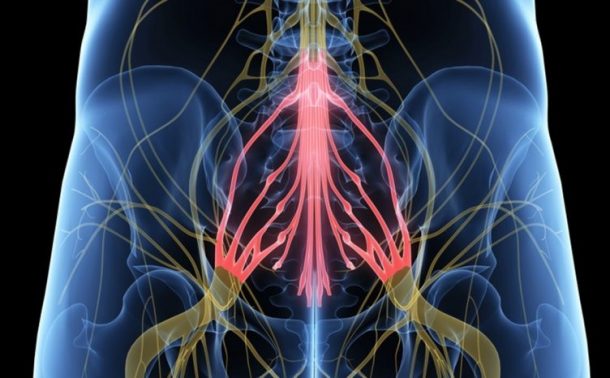Association Between the Type of First Healthcare Provider and the Duration of Financial Compensation for Occupational Back Pain
SOURCE: Journal of Occupational Rehabilitation 2017 (Sep)
Marc-André Blanchette, Michèle Rivard, Clermont E. Dionne, Sheilah Hogg-Johnson, Ivan Steenstra
Public Health PhD Program,
School of Public Health,
University of Montreal,
Montreal, QC, Canada.
Objective To compare the duration of financial compensation and the occurrence of a second episode of compensation of workers with occupational back pain who first sought three types of healthcare providers.
Methods We analyzed data from a cohort of 5,511 workers who received compensation from the Workplace Safety and Insurance Board for back pain in 2005. Multivariable Cox models controlling for relevant covariables were performed to compare the duration of financial compensation for the patients of each of the three types of first healthcare providers. Logistic regression was used to compare the occurrence of a second episode of compensation over the 2–year follow-up period.
Results Compared with the workers who first saw a physician (reference), those who first saw a chiropractor experienced shorter first episodes of 100 % wage compensation (adjusted hazard ratio [HR] = 1.20 [1.10–1.31], P value < 0.001), and the workers who first saw a physiotherapist experienced a longer episode of 100 % compensation (adjusted HR = 0.84 [0.71–0.98], P value = 0.028) during the first 149 days of compensation. The odds of having a second episode of financial compensation were higher among the workers who first consulted a physiotherapist (OR = 1.49 [1.02–2.19], P value = 0.040) rather than a physician (reference).
There are more articles like this @ our:
Conclusion The type of healthcare provider first visited for back pain is a determinant of the duration of financial compensation during the first 5 months. Chiropractic patients experience the shortest duration of compensation, and physiotherapy patients experience the longest. These differences raise concerns regarding the use of physiotherapists as gatekeepers for the worker’s compensation system. Further investigation is required to understand the between-provider differences.
KEYWORDS: Back pain; Chiropractic; Compensation duration; Healthcare provider; Medicine; Occupational; Physiotherapy
From the FULL TEXT Article:
Introduction
According to the 2010 Global Burden of Disease study, back pain causes more years of life with disability (YLD) than any of the other 291 conditions studied. [1] It also ranks sixth for the overall burden. [1] The point prevalence of back pain is estimated at approximately 9 %, and its lifetime prevalence is near 85 %. [2, 3] Back pain is the most common occupational injury in Canada and the United States. [4, 5] The Workplace Safety and Insurance Board (WSIB) of Ontario considers low back pain a highimpact claim responsible for 20 % of all lost time claims [6], and the Quebec’s Commission de la Sante´ et de la Se´curite´ du Travail paid approximately $540.5 million for vertebral conditions in 2008. [7]
In Canada, the provincial workers’ compensation boards provide financial support, medical assistance and rehabilitation to workers suffering from occupational injuries. Most provincial boards provide direct access to physicians and chiropractors. The exception is Quebec, where physicians are the sole gatekeepers of the workers’ compensation system. [8] In January 2004, the WSIB expanded direct access to physiotherapists and registered nurses (extended class). [9]
The Regulated Health Profession Act in Ontario (and the Physiotherapy Act) has allowed physiotherapists (outside of a public hospital) to assess and treat patients without a referral from a physician since 1991. Even after those policy changes went into effect, many private and quasipublic insurers continued to require a physician referral. A previous study concluded that delayed access to physiotherapy was a predictor of an increased duration of WSIB benefits [10] and that direct access to physiotherapy was associated with positive patient outcomes. [11] The evaluation of the WSIB Acute Low Back Injury Program of Care (ALBI) revealed that physiotherapists saw patients at a much later date after their injury than physicians or chiropractors did [12]; often, the first visit was so late that the patient was not eligible for treatment within the ALBI recommendation (at the time, patients were required to access care within 28 days after their injury). Those findings influenced the WSIB policy change.
The diagnostic and therapeutic tools for back pain differ among healthcare providers: physicians can prescribe medication and diagnostic imaging; chiropractors can prescribe X-rays but no medication; and physiotherapists cannot prescribe diagnostic imaging or medication. Therefore, it is possible that a patient who initially consults a physiotherapist or a chiropractor will be referred to a medical environment for complementary imaging or drug prescriptions. This situation could lead to a duplication of consultations, which could prolong the rehabilitation process. To develop the best first-line care possible, it is important to investigate whether these new providers have an impact on the return to work after an injury. In Washington, nurse practitioners as attending providers had disability and cost outcomes similar to those of physicians [13], and workers who first saw a chiropractor were less likely to become chronically work disabled. [14] The objective of the current study was to compare the duration of financial compensation and the occurrence of a second episode of compensation for back pain among patients seen by three types of first healthcare providers (physicians, chiropractors, and physiotherapist) in the context of the Ontario workers’ compensation board.
Read the rest of this Full Text article now!






Leave A Comment